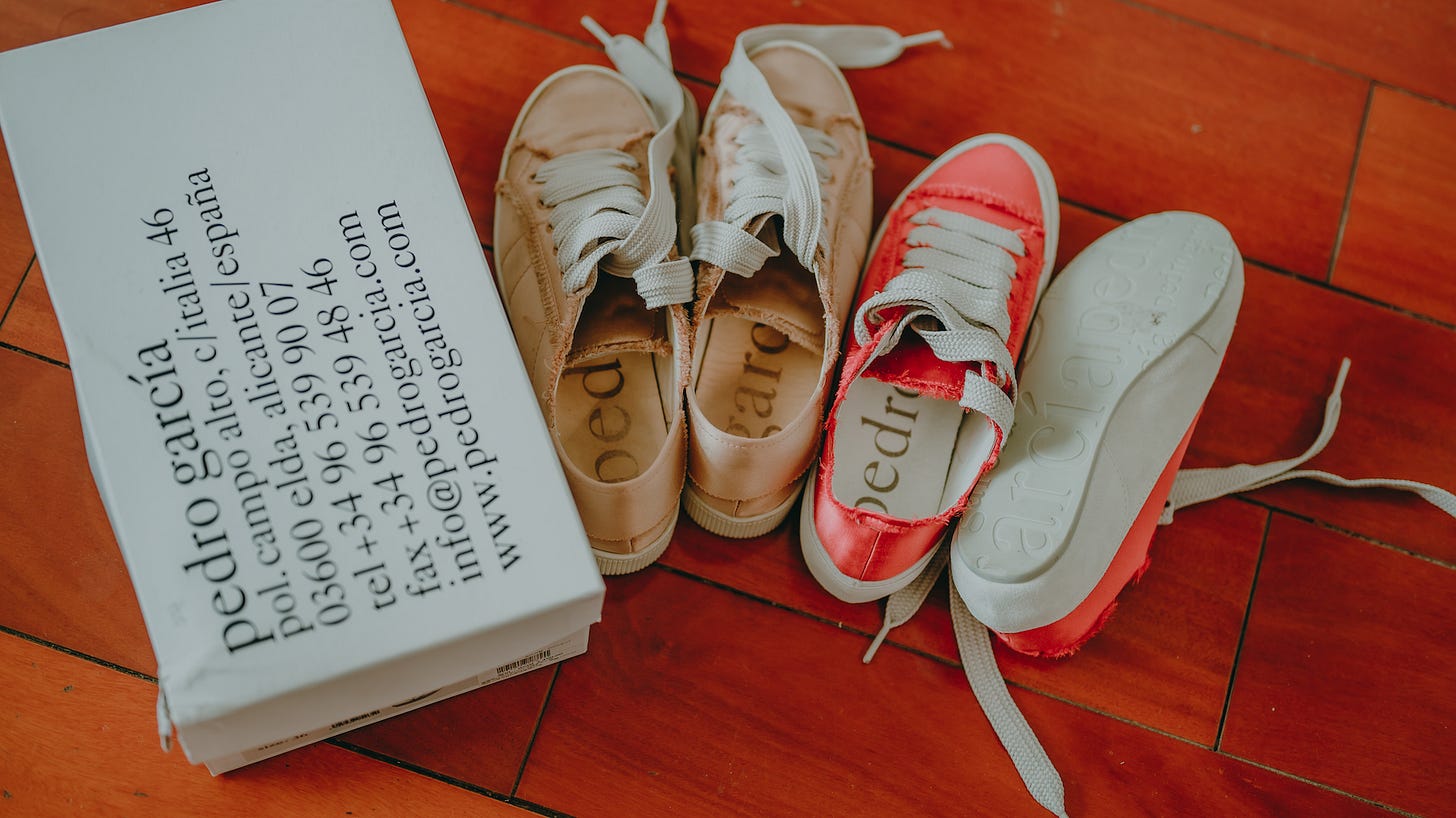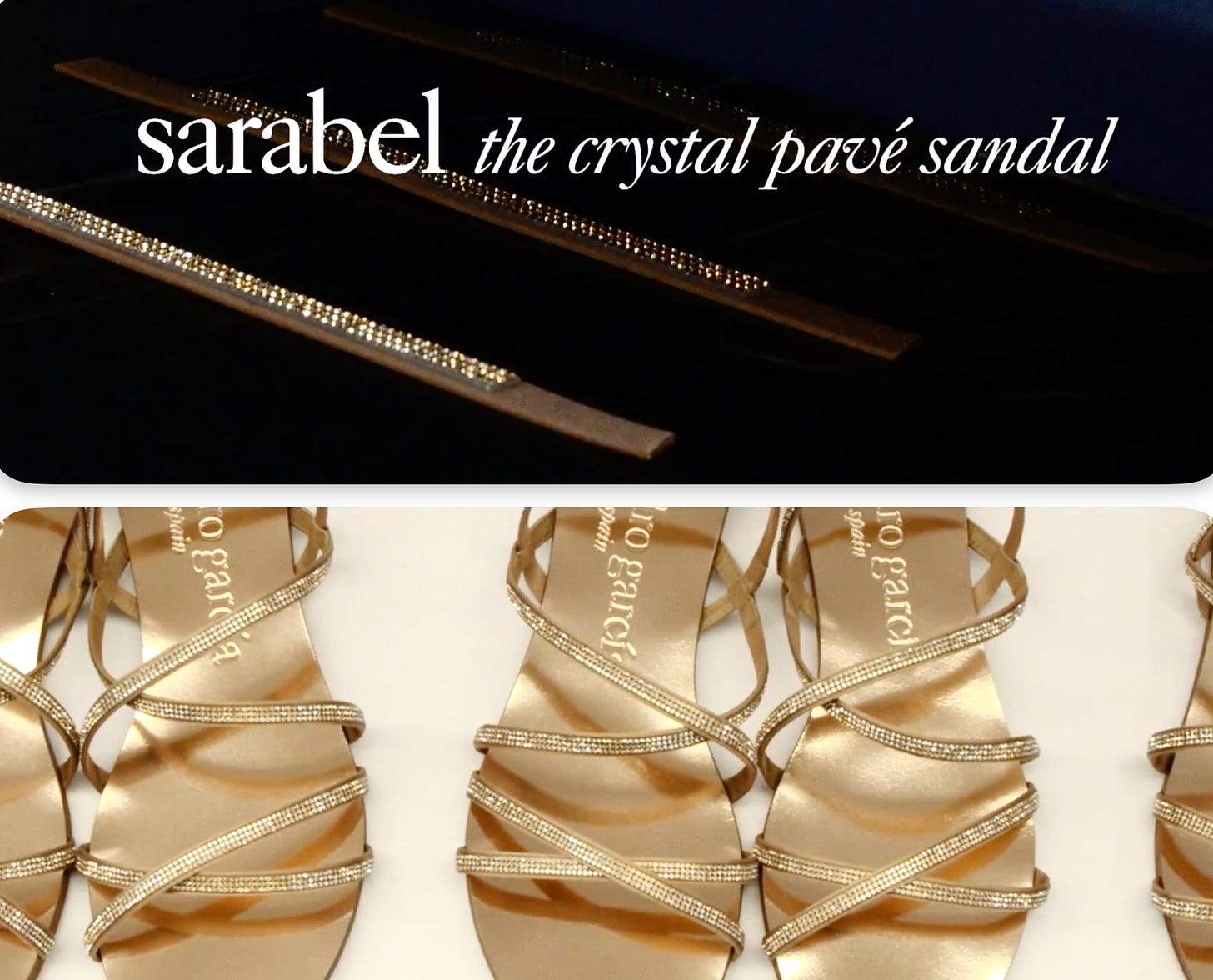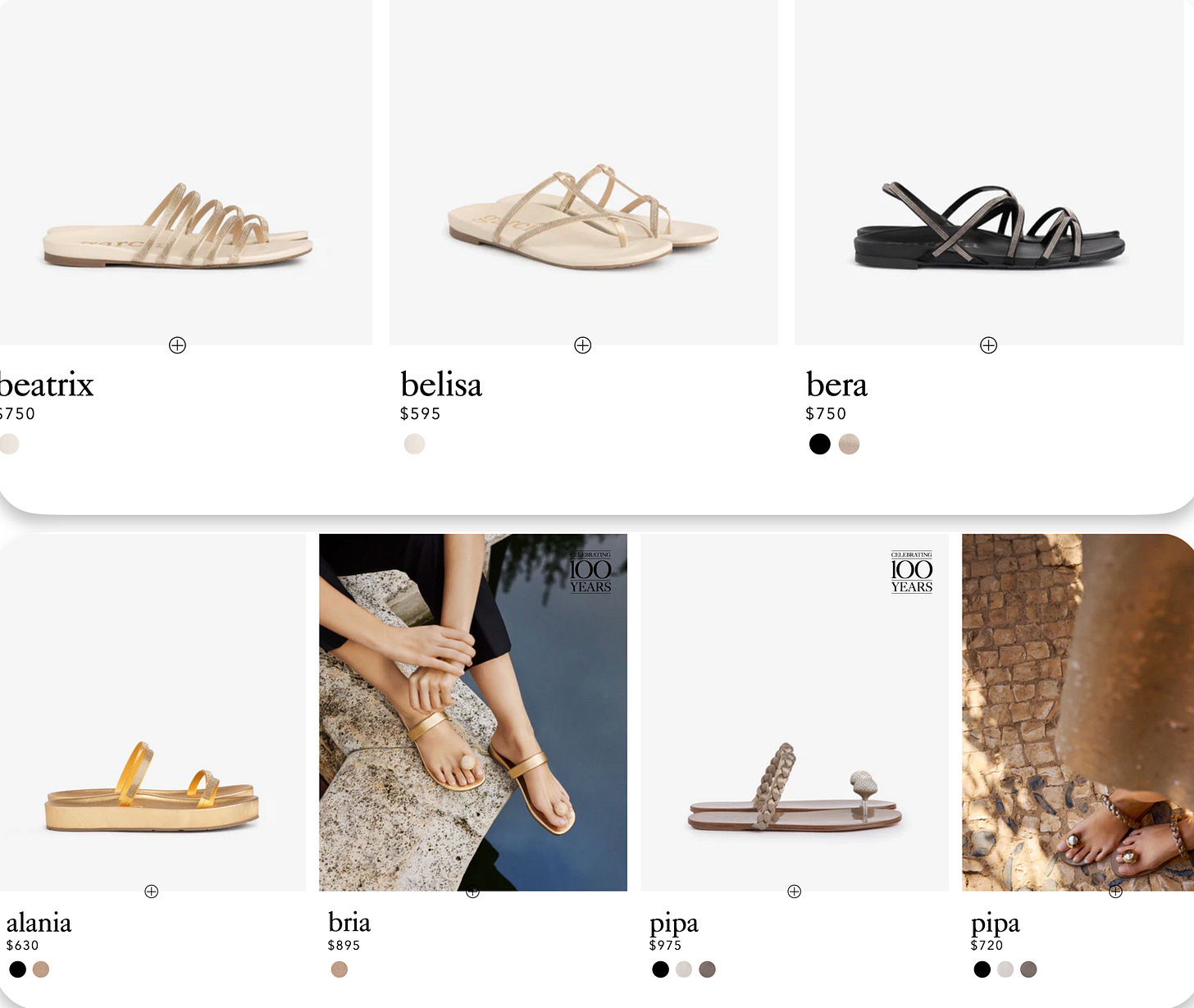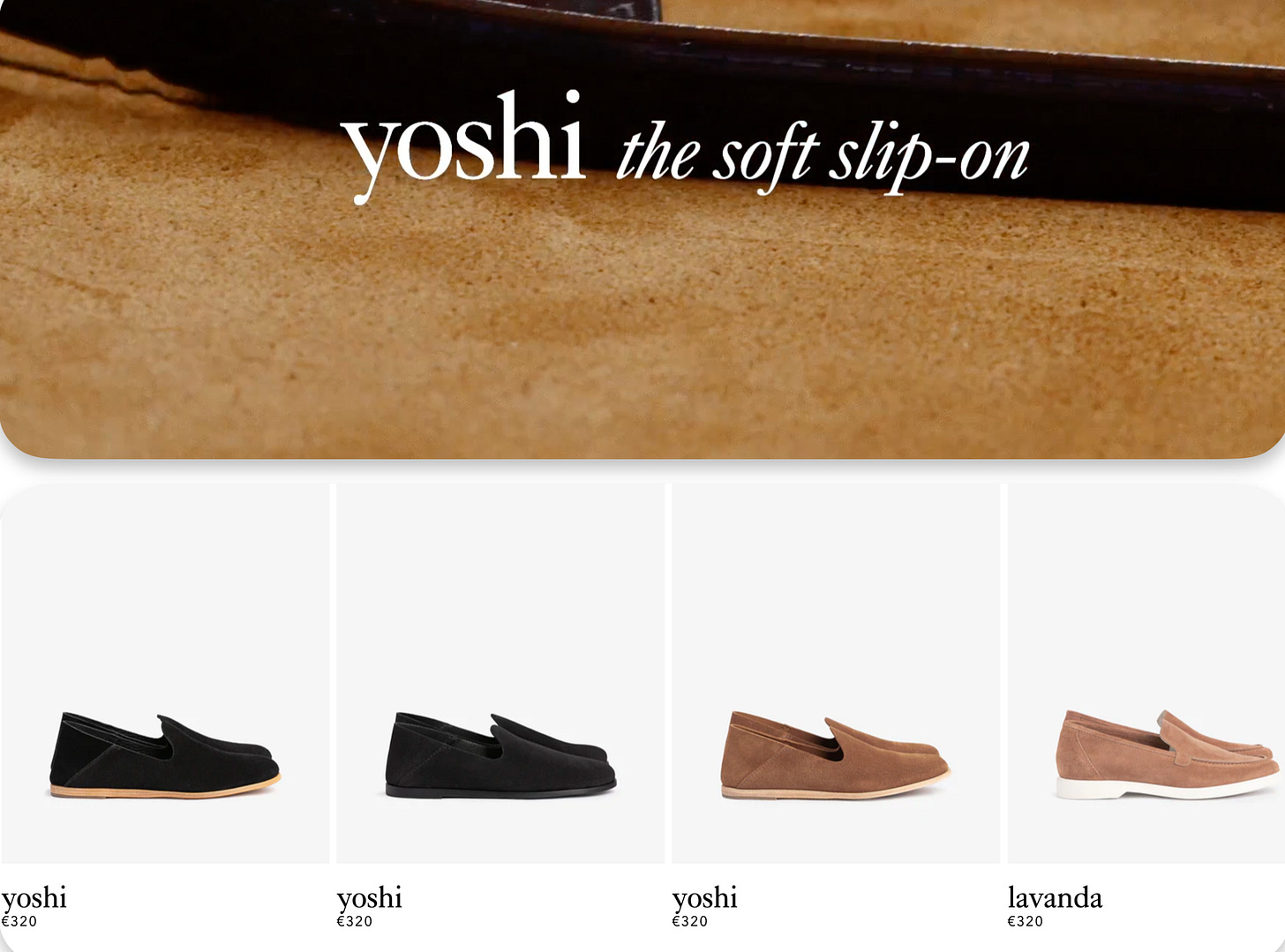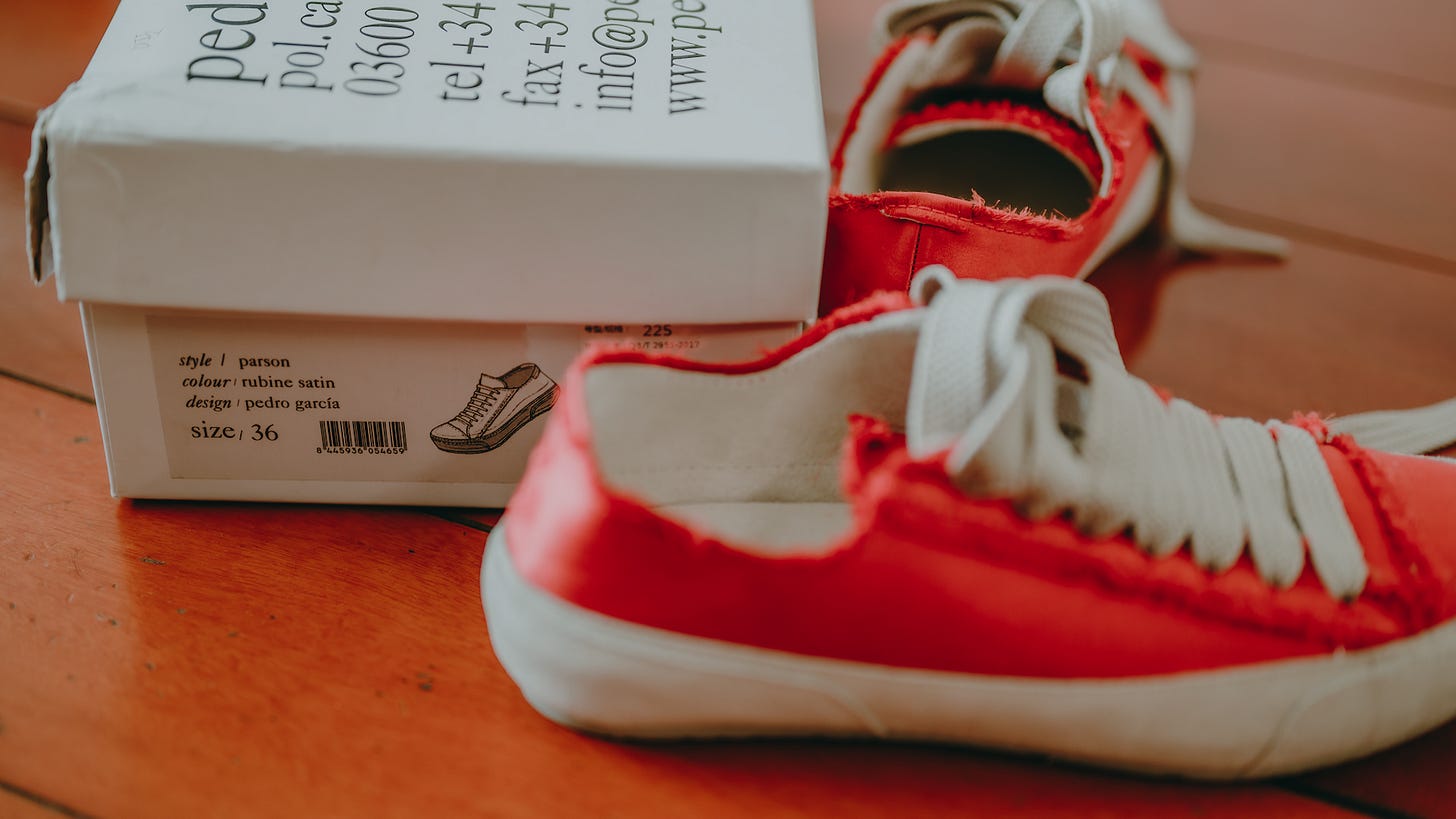Pedro García | Classic Spanish Silk Satin Shoes, from OEM to Global Brand
I've bought my second pair of Pedro García satin shoes now. Made in Spain by a family business, with comfortable cowhide lining and insoles, plus shimmering silk satin uppers, they are beautiful and can withstand walking over 10,000 steps. They are convenient and comfortable everyday shoes that don't even need a break-in period, so I'm dedicating a whole post to them.
I think these shoes are quite niche, and the family business has focused solely on satin shoes for decades, which is why I'm writing this post. This is the third Spanish brand I've written about so far. Last summer, I wrote about two dress brands: Cortana and Sophie et Voila (the fabric was a bit lacking, but suitable for design inspiration). Spain's Mediterranean climate is perfect for summer, silk, and dresses. The fashion brands in this country tend to be artistic and niche, more understated and quiet, and the prices are quite reasonable.
Whenever I write about Spanish or South American brands, I always feel a sense of being in a foreign land, full of exotic charm.
01
Pedro García is a renowned Spanish footwear brand, with all shoes made in Spain, and its history dates back to 1925. The brand was founded by Pedro García Amat and his sister Mila in Elda, a small town in Alicante, Spain, initially as a children's shoe factory. In the 1960s, the brand transitioned into a fashion brand, focusing on manufacturing high-quality, comfortable footwear, maintaining production in Elda, Spain.
Initially, neither of them intended to join the family business, but their father often took them on trips, to exhibitions, and to sell shoes in New York, gradually infecting them with a passion for the family business. Pedro was responsible for creative design, while Mila handled modeling and trying on shoes (Mila was a ballet dancer at the Classical and Contemporary Ballet of Madrid), as well as business affairs.
Elda is a famous shoemaking town in Spain, home to the Museo del Calzado (Footwear Museum), which showcases ancient footwear, shoemaking tools, and the development and progress of shoemaking technology.
Today, Pedro Garcia is managed by the founders' grandchildren, Pedro and Mila, and continues to operate as a family business. When the grandchildren took over, Pedro García was still primarily a shoe manufacturer, with its main business being OEM production, even manufacturing for Stuart Weitzman, and its own shoe designs were secondary. Now, Mila's two daughters, Zahara and Candela García, from the fourth generation, have also joined, responsible for digital marketing and project management, respectively.
The Pedro Garcia brand insists on comfort and quality, prioritizing comfort even if it means a slightly less intricate design ("not just make a pretty design, but one that women want to wear"), and doesn't chase trends ("We've never followed trends. There are seasons when you're left out of the trend."). All shoes are handmade in Elda.
All Pedro García outsoles and insoles are branded with the Pedro García logo, including the shoe boxes, to increase brand recognition.
Pedro García's products are sold in 48 countries worldwide, with 95% of its production exported and an annual turnover of approximately 12 million euros. The brand has a strong presence in European, American, and Asian markets, partnering with retailers such as Neiman Marcus (USA), Lane Crawford (Hong Kong), Chapters (Milan), and Level Shoes (Dubai). The brand's initial strategy focused on the European market, then shifted to the American market in the 90s, and later to the Asian market after the 2010s. Lane Crawford has been collaborating with Pedro García for over 10 years.
02
Pedro García's most classic series is the Parson Style, featuring glossy silk satin.
The satin upper is cut with raw edges for a unique personality.
The Parson series features cow leather lining and sides, with a rubber sole. My gold pair also has rubber on the sides of the sole, making it a variation of the Parson.
They also use silk satin in other shoe designs, including the Orella style and Arena style, but these aren't classic styles, and I find some of them too ugly to accept.
The second classic series is the Sarabel rhinestone sandals. Pedro Garcia's sandal uppers are also designed to have a satin-like sheen whenever possible.
Sarabel is applied to various Pedro Garcia sandal and slide styles, including a flip-flop with a large crystal, which is also very representative of the brand. However, I personally dislike flip-flops; I dislike anything that separates the toes. I'm considering trying the flat Sarabel sandals with a heel. Additionally, Pedro Garcia's crystals are in collaboration with Swarovski.
I also can't wear the espadrille wedge heels with jute rope soles that Gabriela Hearst popularized in recent years. Pedro Garcia has also been promoting this type of espadrille wedge heel in the last two years.
Espadrille refers to a canvas flat shoe, typically with a sole made of jute grass or rope. This shoe originally originated from the border area between France and Spain.
Pedro Garcia also has thick-soled loafers, but I don't recommend them; they're not attractive. The Yoshi slip-on below, however, is a bit better.
The Yoshi slip-on, along with the aforementioned Parson satin flats and Sarabel crystal sandals, are considered by Pedro García's official website to be the brand's three core Signature series. Compared to Parson and Sarabel, the Yoshi is much less known, and its name isn't well-chosen; it sounds awful.
Pedro Garcia boots are more expensive, but boots aren't the brand's focus; they're just to enrich the product category and lack distinct features.
Epilogue
Pedro Garcia's Parson satin shoes have become my staple, and I'm also considering trying the Sarabel rhinestone sandals, though I personally don't particularly like such overtly feminine crystal sandals; I'll need to try them on for comfort. All other styles from the brand are a pass for me. I must say, brands specializing in sandals are quite rare.
This red satin might not look appealing on its own, but when placed alongside my other shoes or paired with an outfit, its special quality becomes apparent. It's great to have a pop of bright color occasionally among various shoes and clothes.
There's also a regular brand called Oroz&CO that also claims to be made in Elda. I'm listing it here to show how these fashion marketing concepts have become popular after the pandemic; I wrote about Julia Jentzsch from New York previously.
This post isn't very long. Pedro García itself is a rather niche brand that quietly and steadily makes shoes, adhering to its own principles. Leaving other shoes aside, if I come across the Parson series again, I'll definitely consider getting another pair, as it balances comfort, quality, and price. Usually, shoes in this price range have fabric linings, and fabric is much more prone to rubbing than cowhide.
pamperherself









